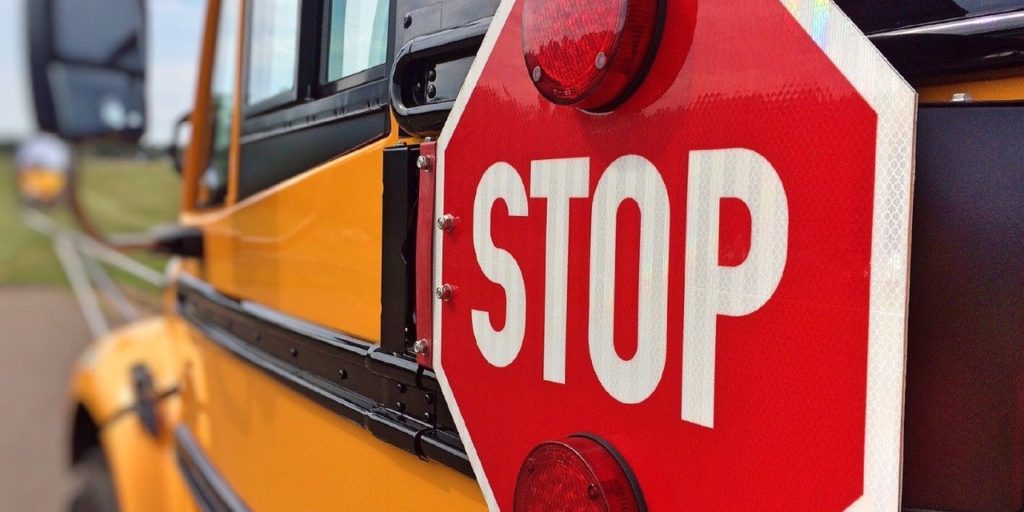- Changes to Rules of Civil Procedure now in force - January 12, 2021
- School is back in session so it’s time for a traffic safety lesson - October 1, 2020
- Mandatory masks and potential liability for COVID-19 transmission - August 19, 2020
By LegalMatters Staff • As schools get up to capacity after a staggered start it’s a good time to remind drivers and pedestrians of their safety responsibilities, says Ontario critical injury lawyer Joseph A. Cescon.
“It’s quite a different return to school this year. The volume is picking up. It’s the longest March break we’ve ever had. That means children are not necessarily going to do what they should be doing when it comes to using the roadways, whether its walking or on a bicycle,” says Cescon, a partner at McLeish Orlando LLP. “It’s everyone. Drivers have to be vigilant. Children too. Everyone has to get back to a certain degree of defensiveness.”
He tells LegalMattersCanada.ca that many things have changed since schools shut down due to the coronavirus crisis. Children have been away from the classroom for six months and may have forgotten some of the rules of the road.
Drop in traffic
Cescon notes that with many people working from home there has been a noticeable drop in traffic, which can encourage lax habits.
“It seems that with the lower volume of vehicles on the road people have forgotten their common sense. Drivers are just generally less aware, so are pedestrians,” he says. “I see people walking on the road. They are not looking both ways before crossing.
“It used to be, just because of volume, there was a limit to the speed you could achieve. The reality is that with most office places not having returned to work there is an ability to drive a lot faster because there’s open roadway.”
Cescon says cities have allowed bars and restaurants to extend patios out to the street, limiting access to vehicles on some roads.
Unfamiliar routes
“Suddenly that changes how the traffic moves through a neighbourhood,” he says, adding drivers taking new routes may be unfamiliar with school zones and speed limits.
“There has to be a level of awareness or things can end badly,” Cescon says. “We need everyone to be a little bit more vigilant in terms of the sharing of the roadways.”
He says he has also seen “a massive uptake in new cyclists which is fantastic.”
“It’s great to have more cyclists on the roadway but they have to familiarize themselves with the rules of the road and ensure they are obeying them,” says Cescon. “Cyclist organizations in various cities are great for giving people advice.”
- Mandatory masks and potential liability for COVID-19 transmission
- Embrace technological changes brought on by COVID-19 shutdown
- Take the right legal steps in your personal injury claim
He notes that many children have not had the freedom to move far from home during the pandemic. Now that they are returning to class “they are walking to school, however long that might be.
“Children are very excited to get to school; they are finally having some social interaction. Unfortunately, that can lead to some absentmindedness from our young and vulnerable users of the roads,” Cescon says. “They may not be paying as close attention in terms of all the good habits they have been taught. Looking both ways, that sort of thing.
Reinforce safety rules
“Parents have to be more aware of the fact that their children have been on the longest break from being good users of the roadway,” he adds. “Parents have to remind them to look both ways at intersections. At laneways, at driveways. Don’t expect that drivers are going to be doing what they should be doing.”
For their part, drivers must be “a little more patient” in school zones, says Cescon, noting that a World Health Organization study revealed that a pedestrian struck by a car travelling 45 km/h has less than a 50 per cent chance of surviving an impact while someone hit by a vehicle going 30 km/h or less has a 90 per cent chance of survival.
“There’s no question speed kills. When people drive at the speed limit, particularly in these school areas, it makes all the difference,” he says. “When you consider the perception reaction time for drivers, that few extra fractions of a second for people to respond can turn a potential tragedy into an accident that is avoided.”
Shared responsibilties
Pedestrians and drivers have a role to play in avoiding accidents, Cescon says.
Drivers should:
- Obey speed limits and avoid distractions such as texting.
- Watch for children running from between parked cars.
- Approach school buses with caution.
- Allow more time for travel.
- Never assume a pedestrian can see you.
Pedestrians should:
- Choose a safe route that includes marked crosswalks or intersections with crossing guards.
- Obey all traffic signals. Be visible to oncoming traffic.
- Use sidewalks; if there are no sidewalks, walk facing traffic.
- Never assume a driver can see you.
Cescon says drivers and pedestrians must “return to the familiarity of using the roadways safely.”
“It’s not about extending blame,” he says. “People have established new patterns during the pandemic. Everyone just has to look out for their neighbours. That way we can lessen the number of avoidable collisions on our roadways.”

